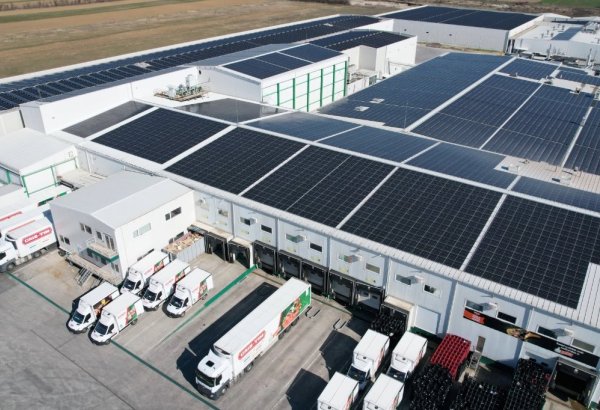ASTANA – Renewable energy development in Central Asian countries is progressing unevenly. Some states have long been exploring the opportunities presented by alternative energy sources, while others are just beginning their journey toward sustainability, reports TurkicWorld with the reference to The Astana Times.
Rapid progress of renewable energy in Kazakhstan
Kazakhstan’s renewable energy sector has been evolving for over a decade, gradually becoming more prominent in the country’s energy landscape. Kazakhstan ratified the Paris Climate Change Agreement and adopted the Carbon Neutrality Strategy by 2060, indicating a strong commitment to sustainable practices. The government is engaged in several significant international projects in renewable energy.
According to the Ministry of Energy, the country currently hosts 133 renewable energy facilities. These include 48 wind power stations with a total capacity of 1,107.5 megawatts (MW), 43 solar power stations with a capacity of 1,148 MW, 39 hydropower stations with a combined capacity of 269.605 MW, and three biogas power stations with a capacity of 1.77 MW. The cumulative installed capacity exceeds 2.5 gigawatts. In the first half of 2023, these renewable energy facilities generated 3.35 billion kilowatt-hours (kWh) of electricity.
Kazakhstan holds substantial potential in hydropower, wind energy, and solar energy. According to the United Nations Industrial Development Organization (UNIDO), the potential for small hydropower in the country includes 4,800 MW for power stations up to 35 MW and 2,707 MW for those below ten MW. The potential for annual electricity generation from small hydropower is estimated at 65 billion kWh.
The most promising prospects for hydropower development are in the country’s southern regions, where nearly 65% of the hydropower resources are concentrated along the mountainous rivers. Developing small hydropower stations offers the advantages of relatively low energy production costs and environmental sustainability. The construction of hydropower cascades enables incremental capacity additions without waiting to complete the entire project, significantly expediting the return on capital investments.
According to experts, Kazakhstan is located in a wind-rich region in the northern hemisphere, boasting a vast wind energy potential estimated at over 1,820 billion kWh. The Kazakh Ministry of Energy is considering plans to build wind farms in 46 regions across the country, with a combined capacity of over 1 million kWh by 2030.
The country’s extensive territories also receive abundant sunlight, especially in the southern and southwestern regions. According to the Central Asian Data Gathering and Analysis Team (CADGAT), the potential for solar photovoltaic energy comprises 6,684 terawatt-hours per year. With 2,200–3,000 hours of sunshine annually, solar radiation reaches 1,200–1,700 kW/m2. Solar energy’s gross, technical, and economic potential is estimated at one billion gigawatt-hours (GWh), one million GWh, and ten GWh, respectively.
Other alternative energy sources in Kazakhstan include biogas technologies, solid waste processing, and the potential to harness wave energy, tidal energy, and tidal currents from the Caspian Sea.
Solar and wind power stations under construction in Uzbekistan
Uzbekistan holds an impressive combined renewable energy potential of 2,091 billion kWh for electricity production, which is 30 times higher than its annual consumption, according to estimates from the International Energy Agency and the United Nations Economic Commission for Europe. With nearly 320 sunny days per year, Uzbekistan stands out as a leader in solar energy potential, with a total capacity of 2,058 billion kWh.
Significant wind energy potential also exists in the northwestern and southwestern regions of the country, with various estimates suggesting a gross potential of up to 4,090 billion kWh and a technical potential exceeding 9.9 billion kWh.
Uzbekistan has strongly emphasized developing green energy, with 21 agreements signed in the past four to five years with international companies for the construction of solar and wind power stations. These agreements have a combined capacity of 7,047 MW, and an additional five contracts are in place for the self-consumption of electricity transportation with a total capacity of 2,030 MW.
Currently, 19 solar energy projects with a total capacity of 3,977 MW and seven wind power stations with a combined capacity of 3,100 MW are in progress. These projects, with a total cost exceeding $9 billion, are all carried out by foreign companies through direct investments. By 2023-2024, seven solar and wind power stations with a combined capacity of 2,797 MW are expected to be commissioned.
In 2025, two wind power stations with a capacity of 500 MW each will be launched in the Bukhara Region. In 2026, four wind power stations with a total capacity of 1,600 MW will be commissioned in the country. Uzbekistan is poised to launch solar and wind power stations with a total capacity of over 8,000 MW and hydropower stations with a capacity of 868 MW by 2026.
Tajikistan ranks sixth worldwide in green energy production
Tajikistan boasts significant potential in hydropower, ranking highest in Central Asia. The country’s hydropower resource reserves are estimated at 527 billion kWh annually. Hydropower stations generate 98% of the country’s electricity, positioning Tajikistan as the sixth-largest producer of green energy worldwide.
Over the past 30 years, Tajikistan has constructed and modernized 287 large and small hydropower stations, and 50 substations, and has reconstructed 75% of its energy infrastructure. However, the country’s solar and wind energy development is in its early stages. Tajikistan aims to advance in these areas, along with geothermal energy and bioenergy.
Kyrgyz Republic’s potential for hydrogen energy
Experts consider the Kyrgyz Republic to have unique conditions for using green technologies. The country’s annual potential for renewable energy sources is estimated at 5,000 million kWh from water sources, over 490 million kWh from solar sources, and 45 million kWh from wind sources.
Although it ranks second in hydropower resources after Tajikistan, the Kyrgyz Republic’s hydropower potential is utilized only at 10%. The country is exploring alternative energy options to diversify its energy sources, especially during droughts. According to the Uzbek government, the country possesses the necessary resources, and attracting investments is a priority. The construction of a 100 MW wind power station in the Issyk-Kul region is already underway, along with a 300 MW solar power station development.
In 2022, the Kyrgyz Republic signed an agreement with Kazakhstan and Uzbekistan for the joint construction of the Kambar-Ata-1 hydroelectric power plant (HPP) on the Naryn River, which will become the largest power station in the country.
The Eurasian Development Bank suggests that the Kyrgyz Republic’s high hydropower potential also makes it suitable for hydrogen energy. The cost of producing green hydrogen can be reduced by establishing facilities near Kyrgyz hydropower stations, where relatively inexpensive hydroelectric power is available at 2-2.3 cents per kWh. Hydrogen produced through water electrolysis using renewable energy sources is classified as green, as it emits no carbon.
Turkmenistan’s plans for solar panel production
Turkmenistan is a key player in Central Asia’s gas and electricity exports, primarily derived from natural gas. In 2022, Turkmenistan approved the Presidential Program for Social and Economic Development for 2022-2028 to embrace renewable energy sources, including domestic solar panel production.
The Turkish company Çalik Enerji Sanayi ve Ticaret A.S. has ambitious plans to construct a 10 MW hybrid solar-wind power station in Turkmenistan by 2024, funded by a $25 million investment from the Abu Dhabi Development Fund. Turkmenistan reached an agreement with Masdar in the previous year for the construction of a 100 MW solar photovoltaic station. The country is also eyeing investments in the hydrogen sector.
Amid the ongoing energy crisis, the development of renewable energy will not only enable Central Asian countries to meet the rising energy demand but also mitigate the adverse environmental impact of fossil fuel consumption.
According to experts’ predictions, the cost of renewable energy sources, particularly solar and wind power, will significantly reduce by 2040. In most regions, clean energy production is projected to become more cost-effective than gas production by 2030. This transformation will be driven by accelerated technological advancements, resulting in a notable decrease in the cost of clean energy.
Ultimately, green energy is poised to not only become economically viable but also emerge as the preferred path for development, serving as a sustainable solution to meet the world’s ever-growing energy needs.
The article was originally published in Kazinform.























